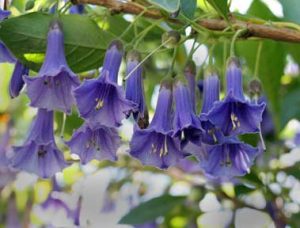Head gardener Sarah Syborn reports on summer 2016
I became involved in the garden at the time of the great hurricane of 1987, which actually did some good because it created light in what had been a rather gloomy place. Very little had been done for years. There were just a few privets and bluebells, the soil was like grey
talcum powder and we spent a lot of time digging out bricks, clay pipes and lumps of concrete.
I used to call in at the garden and help Ron, who looked after it. He was a lovely old boy. It was my therapy on the way to work. I ended up doing more and more and took over professionally in 2005. I have concentrated on creating somewhere that makes you feel as though you are in the country and not in the centre of a city. I plant lots of flowers that bees like – too exotic and they starve – and also modern, more robust versions of Victorian plants such as abutilon (parlour palm) in keeping with the Square’s history. I keep seed heads for the birds in winter. We get warblers, goldfinches, woodpeckers and long-tailed tits.
Our Square is an all-season garden with something of interest and colour in every month. In fact on New Year’s Day there were twelve different types of flowers and shrubs in bloom. The scents of summer never quite match those of winter although sadly our dracunculus vulgaris opposite the double gate is just over. I grew it there for fun in contrast to the usual welcoming scents of the rest of the year.
Take a look at the iochroma australis (Blue Angel’s Trumpet) opposite No. 19/20 on the northern side of the square. I bought this about twelve years ago as a small cutting in a papercup from the Chelsea Physic Garden. I think we are one of a handful of gardens in London with such a fine sp ecimen. It gives us all such pleasure. I am always worried whether the winter has killed it as it seems to stay as bare branches for so long and then to full-on flowers in a couple of weeks. The cornflower blue bells cover the tree in time for Open Squares Day until mid to late July then intermittently until end of September.
ecimen. It gives us all such pleasure. I am always worried whether the winter has killed it as it seems to stay as bare branches for so long and then to full-on flowers in a couple of weeks. The cornflower blue bells cover the tree in time for Open Squares Day until mid to late July then intermittently until end of September.
On the left of the bamboo in the new bed on the mound opposite the iochroma is a lomatia ferruginea. This small rare tree originates from Chile and is a form of protea. It has wonderfully soft ferny leaves and it is flowering for the first time in eight years. The flowers are pea-like yellow and red and held on short racemes so difficult to see amongst the other planting.
In front of the bamboo is begonia luxurians or palm leaf begonia that over-wintered well and seems to becoming well established. Next year it should start looking fantastic.
We are also trying some cane begonias here. In the same bed to the right of the bamboo is the shadiest part of the garden. Here we have improved the soil and concentrated on planting some interesting unusual ferns and other plants that like these conditions.
Under the magnolia in addition to iris confusa you will see podophyllum peltatum spotty dotty in flower. These are about three years old and seem very happy. This North America native is relatively new to the UK and is a fascinating plant. Its homeopathic uses range from curing certain warts and an element in medicines used for ADHD and pregnancy complications.
By the single or southern gate is a lovely azara whose flowers make our February and March days so much happier. Near to that is a halesia that flowered surprisingly early this year but the seed pods will give you some indication of how many wonderful flowers it produced.
Opposite the single gate is a bed that we are currently reconfiguring as sadly we lost the two large purple leaved plums to honey fungus. They have just been removed along with a lime opposite No. 18. The previous shade planting is now in sun so it will be interesting to see how it adapts to such a dramatic change.
This year a new bed was made between the plane tree and the gate to the tennis court. This looked wonderful in the spring with Thalia, fritillaries and camassia planted. There are some lovely persicarias there too.
I was given a magnificent cattle trough that forms part of the children’s planting area. It has some promising sunflowers (Giraffe) growing in it. The children planted rainbow chard, carrots, beetroot, poppies and other flowers. The three sacks have potatoes growing in them and we are having a game as to how many potatoes are on each plant.
Hollyhocks are allowed to grow anywhere as they have been part of the Square for such a long time they have squatters’ rights.
